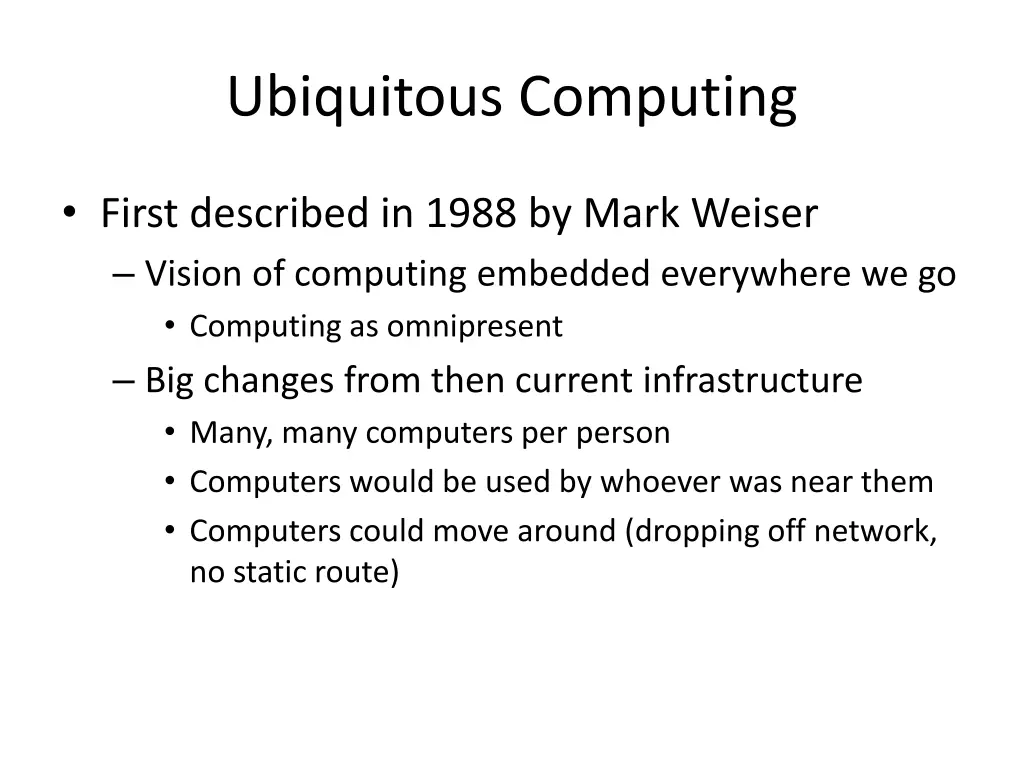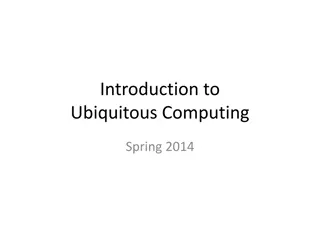
Revolutionizing Computing: Ubiquitous Computing Overview
Learn about Ubiquitous Computing, a vision by Mark Weiser in 1988 for embedding computing technology everywhere, enabling seamless interaction between users and devices. Explore the implications, initial hardware prototypes, and more in this comprehensive guide.
Download Presentation

Please find below an Image/Link to download the presentation.
The content on the website is provided AS IS for your information and personal use only. It may not be sold, licensed, or shared on other websites without obtaining consent from the author. If you encounter any issues during the download, it is possible that the publisher has removed the file from their server.
You are allowed to download the files provided on this website for personal or commercial use, subject to the condition that they are used lawfully. All files are the property of their respective owners.
The content on the website is provided AS IS for your information and personal use only. It may not be sold, licensed, or shared on other websites without obtaining consent from the author.
E N D
Presentation Transcript
Ubiquitous Computing First described in 1988 by Mark Weiser Vision of computing embedded everywhere we go Computing as omnipresent Big changes from then current infrastructure Many, many computers per person Computers would be used by whoever was near them Computers could move around (dropping off network, no static route)
Lots of Implications for Research Systems level work (OS and networking) needed to enable the hardware and communication between devices Sensing work to identify users and their locations Computer-human interaction work on how to enable users to get notifications across devices and locations coordinate their use of devices move content among devices, etc.
Initial Hardware Prototypes Tabs, pads, and boards Boards large shared surfaces that are generally tied to a physical location Pads what we think of as tablet computers and smartphones today Tabs smaller devices a bit like today s smartwatches, fitness trackers, etc. but there were assumed to be dozens per person


